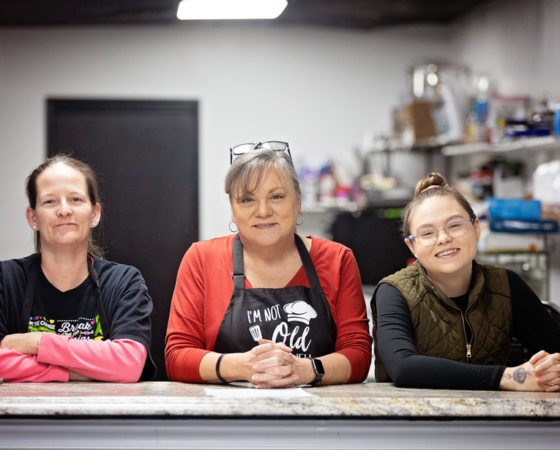This month the focus at Renew Appalachia is on Just Transition and exploring exactly what that means, particularly in the rural areas of Central Appalachia. It’s important, though, to point out that Just Transition is more than just a lofty idea; it’s playing out in communities across our region every day. There are more examples than can fill one blog post, but here are three instances of #TransitionInAction:
Creative Placemaking

Vibrant communities where people want to live and work is an important part of a just transition, and is at the heart of creative placemaking occurring around the region. Take, for example, Hazard, Kentucky’s second year of “Thursdays on the Triangle,” a mini-festival occurring on Main Street in Hazard every other Thursday during the summer months, bringing together the town’s farmers market with food, music and the arts.
Further north in Grayson, Ky., community members lobbied the city to use the former fire hall for a pop-up art gallery that would last one month. Five years later, this community space is still going strong, hosting art exhibits, live music and art camps. The small community of Livingston, Ky., has worked to turn its old schoolhouse into a diversified space designed for meeting multiple community needs. In all these instances, community members are working from the bottom up to help create the types of vibrant communities they want to be a part of.
Energy

Across eastern Kentucky, solar farms are beginning to take hold, transitioning extractive energy to renewable sources. Berea Municipal Utilities was the first in the state to try a solar array in 2011, and this year the idea has taken hold with other energy providers. Kentucky Utilities is already generating electricity from the E.W. Brown solar array in Mercer County, and upon completion, the array will cover 50 acres and generate enough electricity to power 1,500 homes.
Last week, East Kentucky Power Cooperative announced their application to build a solar array at their headquarters in Winchester, Ky., that will cover 60-acres. If approved by the Kentucky Public Service Commission, the 32,000 panels will have an 8.5 megawatt capacity.
At the same time, energy efficiency retrofits are becoming more accessible for homeowners and commercial spaces alike. Programs like the Mountain Association for Community Economic Development’s on-bill financing program, House$martKY, or the grant-funded community efficiency program, Benham $aves, are proving that energy efficiency is the low-hanging fruit of clean energy. Legislation passed at the state level last year introduced Energy Project Assessment Districts (EPADs) that, when adopted by a municipality, will allow commercial buildings, as well as multi-family housing, to complete energy retrofits paid back through a property tax assessment. Energy efficiency upgrades should lower monthly bills for home and business owners while creating demand for contractors.
Bridging the Digital Divide
As Kentucky works towards installing the “middle mile” – a network that will bring broadband internet nodes into eastern Kentucky counties – the Peoples Rural Telephone Cooperative (PRTC) in Jackson and Owsley Counties shows the region what successful last-mile build out can do for communities. Recognizing the importance of high-speed internet accessibility for its customers, the PRTC took the initiative to build out a fiber optic network to every home and business.
Now residents and businesses have access to internet speeds of up to 1Gbps. This accomplishment is striking, considering less than 3% of rural communities and less than 8% of urban areas across the nation have access to rates of equal speed, according to a 2015 broadband report from the White House. These high speeds offer opportunities for telecommuting, distance learning, telemedicine and increased business capability.
What’s so empowering about Just Transition is the way seemingly unrelated, and sometimes small, events in communities across Central Appalachia create momentum and build on one another to create a brighter, more just future for the region. Need to know more? Read more about what we mean by Just Transition in our previous blog.





